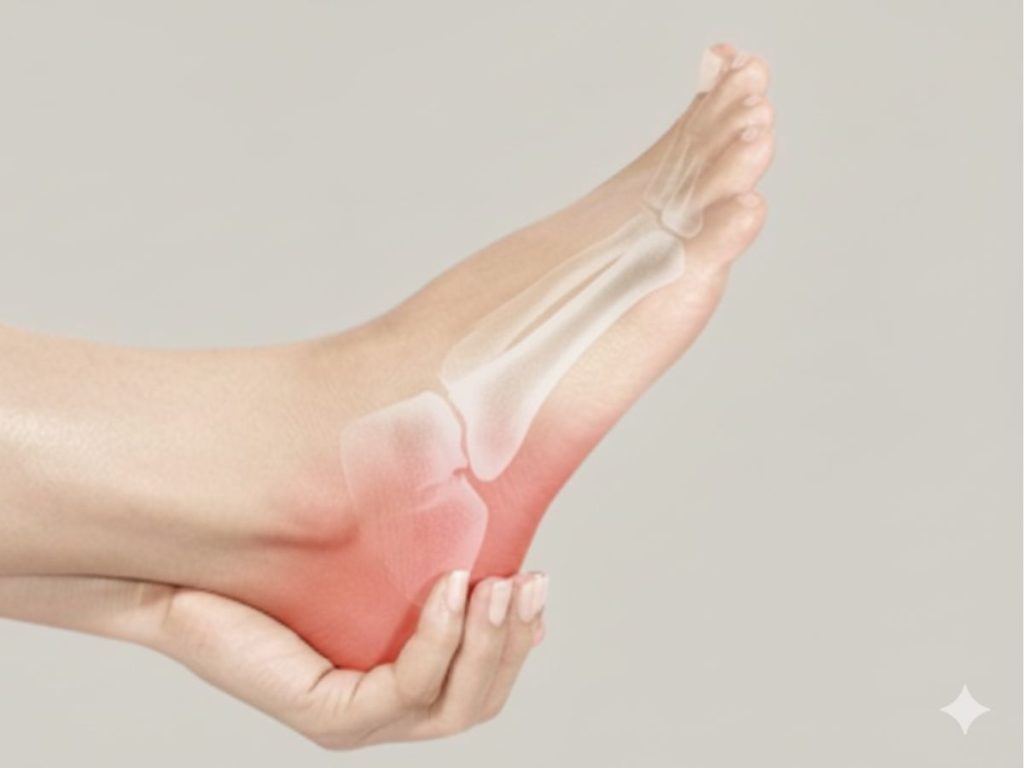Heel Pain Can Impact Your Daily Life: Finding Heel Pain Relief
Heel pain can significantly affect your daily life, making it crucial to find effective heel pain relief as soon as possible. Various treatment options are available depending on your symptoms and the nature of your injury. Consulting with a heel pain doctor in Scottsdale is essential to develop a personalized treatment plan that caters to your specific needs.
Common Heel Injuries & Symptoms
Several heel injuries can lead to pain, but these three are the most common:
Plantar Fasciitis
Plantar fasciitis is the inflammation of the plantar fascia, a ligament that stretches from the heel bone to the top of the foot. This condition is often seen in individuals with high or low arches. When the ligament is overstretched, it becomes irritated and inflamed, leading to pain, particularly after long periods of rest, such as in the morning. Symptoms include stabbing or aching sensations in the heel or along the bottom of the foot, which tend to worsen over time. Common causes of plantar fasciitis include repetitive stress, excessive tension, and irritation.
Heel Bursitis
Heel bursitis is the inflammation of the bursa at the back of the heel. This pain is often caused by improper landing or pressure from shoes. The discomfort typically occurs deep in the heel and the back of the foot, sometimes accompanied by swelling in the Achilles tendon. The condition may worsen as the day progresses. Symptoms of heel bursitis include swelling, inflammation, and pain that can resemble arthritis.
Achilles Tendonitis
Achilles tendonitis is a chronic condition that involves the degeneration of the Achilles tendon, the largest tendon that connects the calf muscles to the heel bone. Minor tears in the tendon prevent it from healing properly, causing it to become thickened, weak, and painful. Symptoms include burning sensations in the heel, tenderness, and pain. Achilles tendonitis is often caused by overuse, stress, and inadequate stretching before physical activity. In severe cases, the tendon may rupture.
Treatment Options for Heel Pain Relief
To achieve heel pain relief, you can start by resting, icing the affected area, elevating your foot, and stretching. However, it’s important to consult a podiatrist to determine the most effective treatment for your specific condition. Your doctor may recommend medication, custom foot orthotics, or physical therapy to address your symptoms.
For more severe cases, additional treatments may be required, such as non-surgical procedures or surgery. Keep in mind that surgery can be risky and typically requires several weeks of recovery time. Fortunately, there are non-surgical options available that offer affordable and quicker recovery times.
Non-Surgical Treatments for Heel Pain Relief:
- Stem Cell Therapy: This procedure promotes cartilage growth, helping to relieve pain and discomfort. It’s a simple, minimally invasive treatment option that can provide significant relief.
- Shockwave Therapy: Shockwave therapy involves short treatment sessions lasting 5 to 10 minutes. It requires minimal maintenance, and recovery time is much faster than other methods. Shockwave therapy is safe, with virtually no risks or side effects, and over 80% of patients report being pain-free after just four weeks.
- PRP Injection: Platelet-rich plasma (PRP) injections are highly effective for treating heel injuries. This procedure stimulates natural tissue healing and is a much simpler alternative to surgery, offering remarkable results and faster recovery.
The Foot and Ankle Center of Arizona Can Help
At the Foot and Ankle Center of Arizona, we specialize in providing heel pain relief through non-surgical treatments for common heel injuries. We offer stem cell therapy, shockwave therapy, and platelet-rich plasma treatments, all delivered with the highest standard of medical care. Our experienced team is dedicated to helping you find relief from heel pain and get you back on your feet as quickly as possible.
If you’re struggling with heel pain, contact the Foot and Ankle Center of Arizona today for expert care and personalized treatment options. Let us help you achieve lasting heel pain relief and improve your quality of life.




